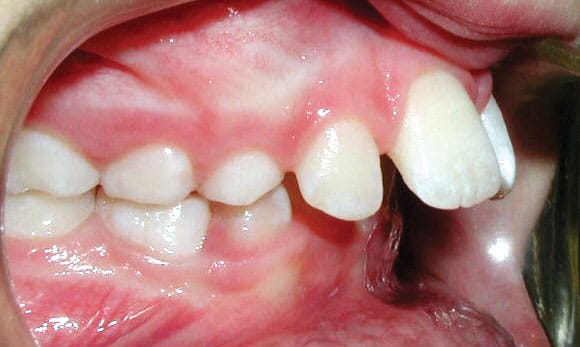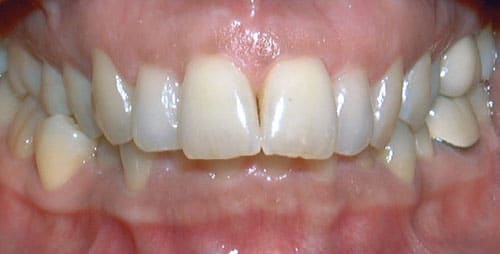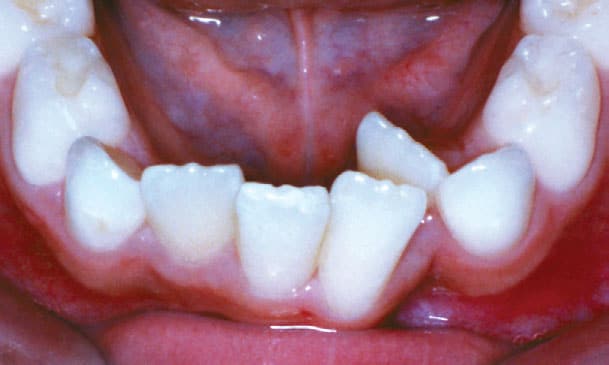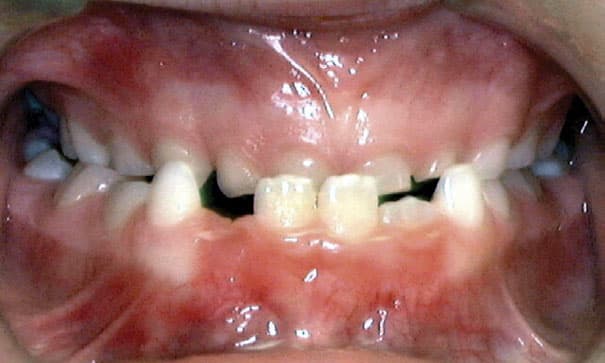Understanding Common Orthodontic Problems
Orthodontic problems are more common than you might think—most people don’t have naturally perfect teeth. Malocclusion, or a “bad bite,” can lead to challenges with chewing, speaking, oral hygiene, and even self-confidence. These problems can be inherited or develop due to habits like thumb sucking, dental disease, injuries, or other medical conditions. In some cases, jaw growth discrepancies and airway issues can also contribute to orthodontic concerns, making treatment essential for both functional and aesthetic reasons.
Understanding the orthodontic problems affecting you or your child is the first step toward a healthier, more confident smile. With expert orthodontic treatment from Dr. Mariah Pewarski, we can correct these concerns to improve both function and aesthetics, such as overbite correction and spacing issues.
Below are some of the most common bite problems:

Upper Front Teeth Protrusion
When the upper front teeth extend too far forward, or the lower teeth do not extend forward enough, it can impact both the appearance and function of your smile. This condition can also increase the risk of trauma to the protruding teeth, especially in children who are active in sports.

Overbite
An overbite occurs when the upper front teeth excessively overlap the lower front teeth. In severe cases, the lower front teeth may bite into the roof of the mouth, causing discomfort and potential oral health concerns. Overbites can also contribute to excessive tooth wear and may lead to TMJ issues over time.

Crossbite
A crossbite happens when the upper teeth sit inside the lower teeth, leading to jaw misalignment and potential asymmetrical jaw growth. Left untreated, cross bites can cause uneven wear on the teeth and may contribute to difficulties in jaw function and facial development.

Open Bite
This condition prevents the upper and lower front teeth from overlapping properly, making chewing difficult. Open bites are often linked to habits such as tongue thrusting or prolonged pacifier use. This condition can impact speech development and may lead to swallowing difficulties if not corrected.

Crowding
Crowding occurs when teeth do not have enough space to erupt properly. Expansion treatments can often resolve this issue without the need for extractions. Severe crowding can also make it more challenging to maintain proper oral hygiene, increasing the risk of cavities and gum disease.

Spacing
Spaces between teeth may result from missing teeth or natural gaps. While sometimes purely cosmetic, spacing issues can also impact overall oral function. In some cases, gaps between teeth can cause food impaction, leading to gum irritation and other oral health concerns.

Underbite
In an underbite, the lower jaw extends forward, causing the lower front teeth to sit in front of the upper front teeth. This misalignment can lead to chewing difficulties and uneven wear on the teeth. Severe underbites can also contribute to speech difficulties and put excess strain on the jaw joint over time.
